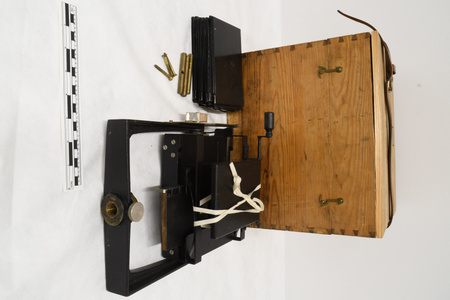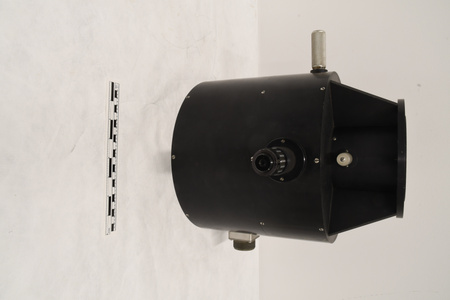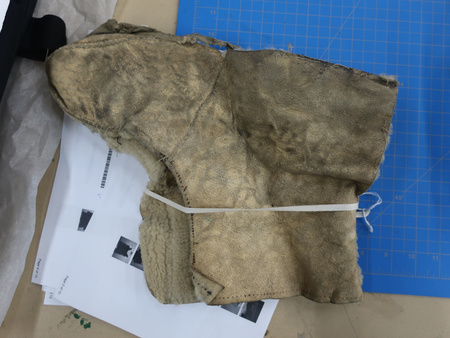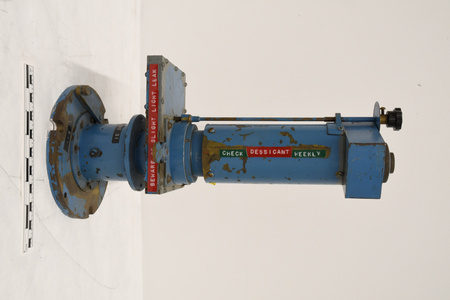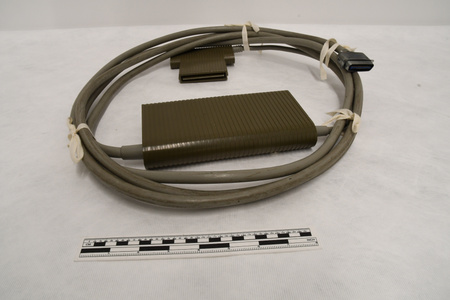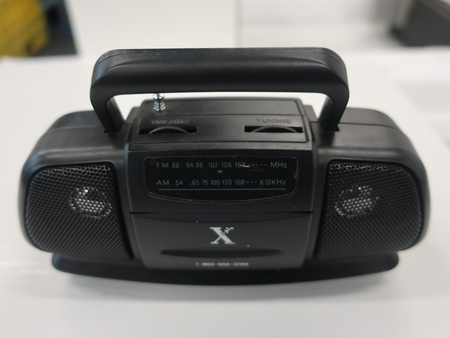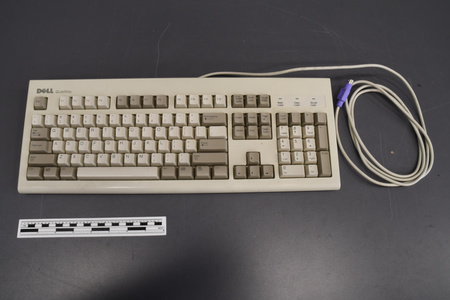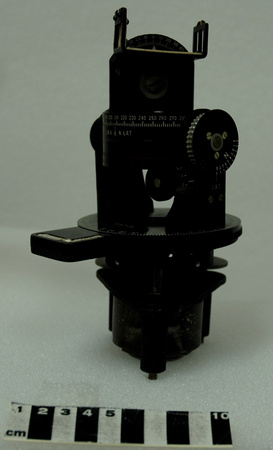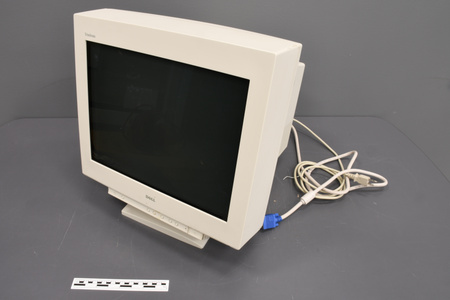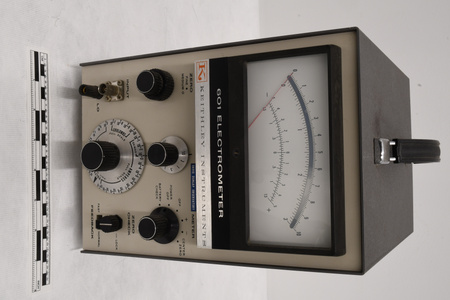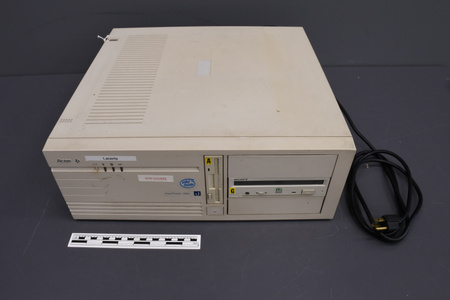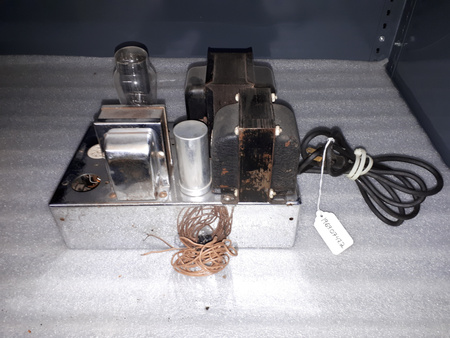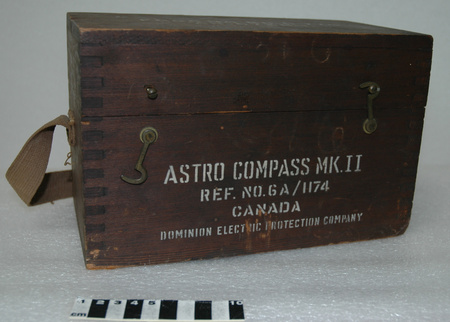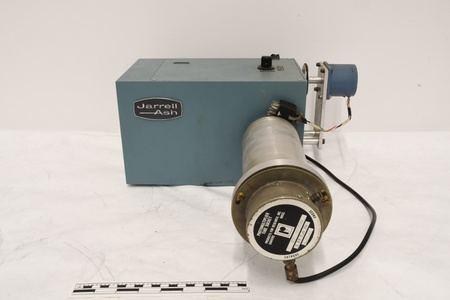Astrocompas
Utiliser cette image
Puis-je réutiliser cette image sans autorisation? Oui
Les images sur le portail de la collection d’Ingenium ont la licence Creative Commons suivante :
Copyright Ingenium / CC BY-NC-ND (Attribution-NonCommercial 4.0 International (CC BY-NC 4.0)
ATTRIBUER CETTE IMAGE
Ingenium,
2008.0203.001
Permalien:
Ingenium diffuse cette image sous le cadre de licence Creative Commons et encourage son téléchargement et sa réutilisation à des fins non commerciales. Veuillez mentionner Ingenium et citer le numéro de l’artefact.
TÉLÉCHARGER L’IMAGEACHETER CETTE IMAGE
Cette image peut être utilisée gratuitement pour des fins non commerciales.
Pour un usage commercial, veuillez consulter nos frais de reproduction et communiquer avec nous pour acheter l’image.
- TYPE D’OBJET
- portable
- DATE
- 1947
- NUMÉRO DE L’ARTEFACT
- 2008.0203.001
- FABRICANT
- Dominion Electric Protection Co.
- MODÈLE
- Astro Compass Mk.II/ 6a/1174
- EMPLACEMENT
- Montréal, Québec, Canada
Plus d’information
Renseignements généraux
- Nº de série
- 1515/42
- Nº de partie
- 1
- Nombre total de parties
- 2
- Ou
- S/O
- Brevets
- S/O
- Description générale
- Non-ferrous metal body, base, parts/ Synthetic part/ Glass levels probably containing spirit
Dimensions
Remarque : Cette information reflète la taille générale pour l’entreposage et ne représente pas nécessairement les véritables dimensions de l’objet.
- Longueur
- 13,5 cm
- Largeur
- 10,0 cm
- Hauteur
- 21,0 cm
- Épaisseur
- S/O
- Poids
- S/O
- Diamètre
- S/O
- Volume
- S/O
Lexique
- Groupe
- Aviation
- Catégorie
- Instruments de bord
- Sous-catégorie
- S/O
Fabricant
- Ou
- Dominion Electric
- Pays
- Canada
- État/province
- Québec
- Ville
- Montréal
Contexte
- Pays
- Canada
- État/province
- Ontario
- Période
- Inconnu
- Canada
-
An instrument used at the David Dunlap Observatory at the University of Toronto, one of Canada's most important astronomical observatories. The lettering on the astro compass box (.2) top indicates that the instrument was used by an individual named Scotty, of the162nd Squadron, Sydney, NS and it comes with a service tag marked 'RCAF' (in Supp. Info.). The David Dunlap Observatory opened in 1935 as the result of a bequest from the wife of David Dunlap. The telescope was a 74 inch (188 cm) reflector built by Grubb Parsons of Newcastle-upon-Tyne in England. The 74 inch was then the largest telescope in Canada (surpassing the 72 inch telescope of the Dominion Astrophysical Observatory in Victoria) and became the second largest in the world after the 100 inch Hooker Telescope of the Mt. Wilson Observatory outside Los Angeles. DDO's reputation grew and following WWII, it began to graduate most of the astronomers produced in Canada with University of Western Ontario far behind. Beginning in the 1960s a number of other astronomy departments were created but UofT/DDO held its place, a position it probably still holds. The DDO had a good technical staff which gave them an advantage and, with most of the 1940s to early 1970s top astronomers coming from UofT, grants from NRC and then ENSERC were almost guaranteed and allowed UofT's top astronomers -- Hogg, van den Berg, Fernie, Bolton, Kamper, Martin, etc. to acquire or build some of the best equipment available in university observatories. For optical observatories, only the DAO had technical staff and budgets that surpassed those of DDO. In 2007, citing increasing light pollution, the University of Toronto announced plans to sell the Observatory property. In June 2008, it was sold to Corsica Development Inc., a subsidiary of Metrus Development Inc. and the Observatory was closed. In 2009 the Observatory buildings and 80% of the site were designated a cultural heritage landscape. Also in 2009 Corsica and the Royal Astronomical Society of Canada, Toronto Centre announced an agreement allowing the RASC to provide public education and outreach programs at the observatory, and to operate the 188 cm telescope. - Fonction
-
A navigational tool for determining the direction of north through the positions of various astronomical bodies. - Technique
-
An astro compass is generally a navigational tool used in aviation. In its most basic form, the astrocompass consists of a base plate marked with the points of the compass, with a mechanism known as an equatorial drum mounted on it. On this drum is a set of adjustable sights and a scale of declination. More advanced versions may have built-in chronometers or default settings for bodies such as the Sun. To use the compass, the base plate is first levelled with the horizon then pointed roughly to what the user believes to be north. The equatorial drum is then tilted in relation to this base according to the local latitude. The sights are then set using the local hour angle and the declination of whatever astronomical body is being used. Once all these settings have been made, the astrocompass is simply turned until the astronomical body is visible in the sights: it will then be precisely aligned to the points of the compass. Because of this procedure, an astrocompass requires its user to be in possession of a nautical almanac or similar astronomical tables, one of its chief disadvantages (Ref. 2). - Notes sur la région
-
Inconnu
Détails
- Marques
- Indented white lettering reads 'CANADA/ ASTRO COMPASS MK II/ REF. 6A/1174/ No. 1525/42' and 'D.E.P. Co.'/ Black lettering on white synthetic reads 'DECLINATION'/ Indented white and red lettering for scales and controls
- Manque
- Unknown
- Fini
- Body painted glossy black/ Textured black painted and brass coloured base and parts/ White synthetic/ Metallic grey parts/ Colourless transparent glass levels in white fitting/
- Décoration
- S/O
FAIRE RÉFÉRENCE À CET OBJET
Si vous souhaitez publier de l’information sur cet objet de collection, veuillez indiquer ce qui suit :
Dominion Electric Protection Co., Astrocompas, avant 1947, Numéro de l'artefact 2008.0203, Ingenium - Musées des sciences et de l'innovation du Canada, http://collection.ingenium.ca/fr/id/2008.0203.001/
RÉTROACTION
Envoyer une question ou un commentaire sur cet artefact.
Plus comme ceci
